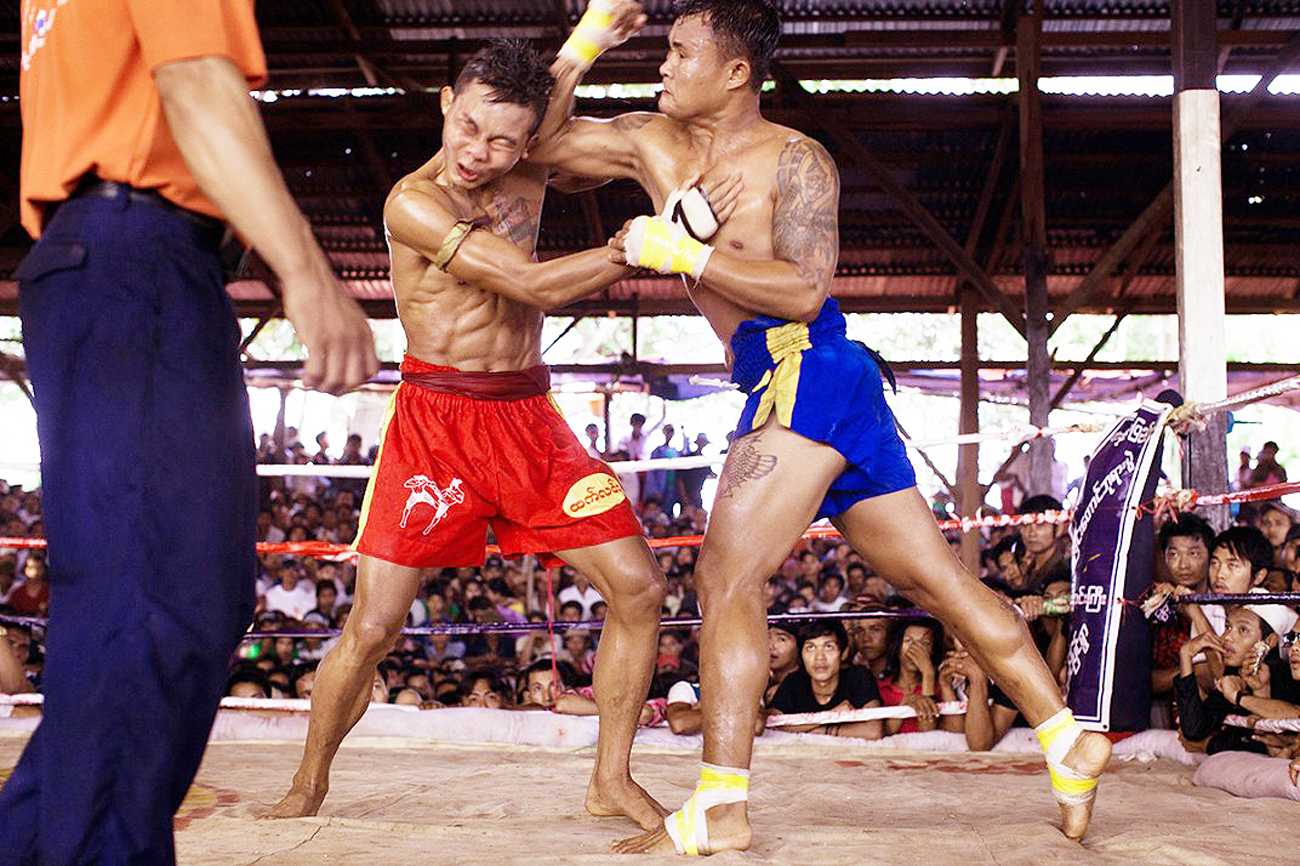LETHWEI AMERICA

Lethwei as a Fighting Art
“Lethwei is linked to the identity of Myanmar . . .
it is a a combat sport, a fighting art, and a culture.”
– Sayar Win Zin Oo
Credited for producing the toughest, most brutal fighters in the world, Lethwei has built a reputation for being one of the most dangerous fighting arts in the world. Closer in principle and practice as a street-fighting application than other kickboxing styles, Lethwei is direct, pragmatic, and vicious.1
If Lethwei is viewed in the context of preparation for personal combat, one can see that it not only teaches timing, distance, and movement but also the ability to give and receive punishment. The goal for the Lethwei fighter is not so much winning and losing but fighting hard and learning lessons about survival. Lethwei’s extensive technical and tactical range as well as its unrestricted rules demand that defense, conditioning, and learning to withstand punishment be emphasized. As a result, Lethwei fighters spend a great deal of time preparing the body to absorb impact as well as conditioning their anatomical weapons for offense.2,3,4,5

The flexibility of Lethwei offers a number of benefits not provided by most kickboxing and martial arts methods currently practiced in the U.S. In addition to its competitive or sporting aspect, Lethwei also offers personal defense and fitness opportunities. Lethwei not only teaches timing, distance, and movement but also the ability to absorb and deliver punishment.
Due to its unrestricted design, Lethwei is arguably more applicable to street defense than other kickboxing arts. The bare-fist punches of Lethwei are better designed to effectively and efficiently inflict damage than those thrown with gloved hands. Lethwei’s head-butting, trapping, clinching, and throwing all serve to make Lethwei tremendously effective as a form of personal defense.4,5,6
The goal in Lethwei is not just about winning but also fighting hard and to learning lessons about personal survival. The facets of Lethwei practice go well beyond sport preparation. It also encompasses a rich traditional culture and value system. Ultimately, the goal of Lethwei training is to prepare one to absorb the difficulties in life and better prepare one to respond appropriately and effectively to them.7
In addition to its competitive, psychological, and self-defense benefits, Lethwei’s emphasis on conditioning provides an excellent method for high-level of fitness development. Lethwei training is highly adaptable to individual and group fitness programs and can be performed at both high and low intensities.4
References
1 The Bodedit. (2017). Lethwei – The Art of Nine Limbs. https://thebodedit.com/sport/lethwei-fighting-the-art-of-nine-limbs/
2 Mallon, S. (2005). Leth Wei & Khun Khmer Boran: Fighting Arts Of Burma And Cambodia. Journal of Asian Martial Arts, Vol. 14, No. 2
3 Gyi, M. (2000). Bando: Philosophy, Principles, and Practice. Private Publication.
4 [email protected]. (2015). Most Brutal Striking Fighting Art–it’s not Muay Thai. http://www.fluentfighting.com/?p=554
5 Lethwei-Martial Arts Database (2012). Available: http://www.mardb.com/lethwei
6 Courderette, M. (2017). Lethwei: Myanmar Traditional Boxing. Ginger Editions Publisher
7 Lethwei-Martial Arts Database (2012). Available: http://www.mardb.com/lethwei